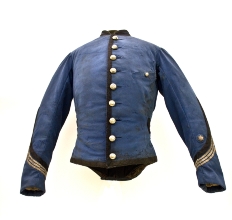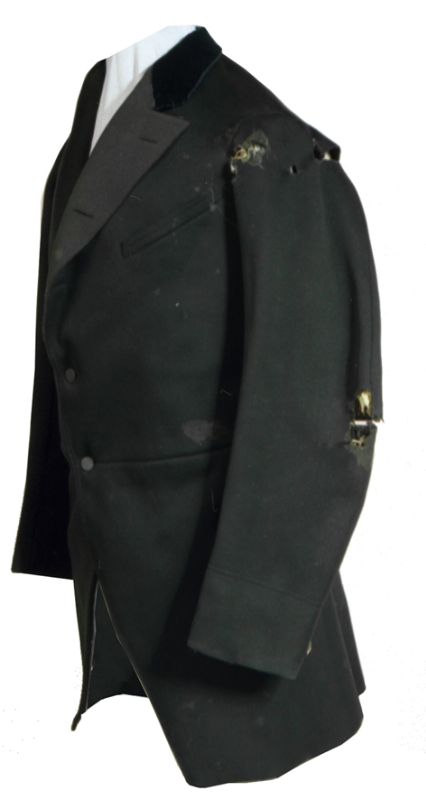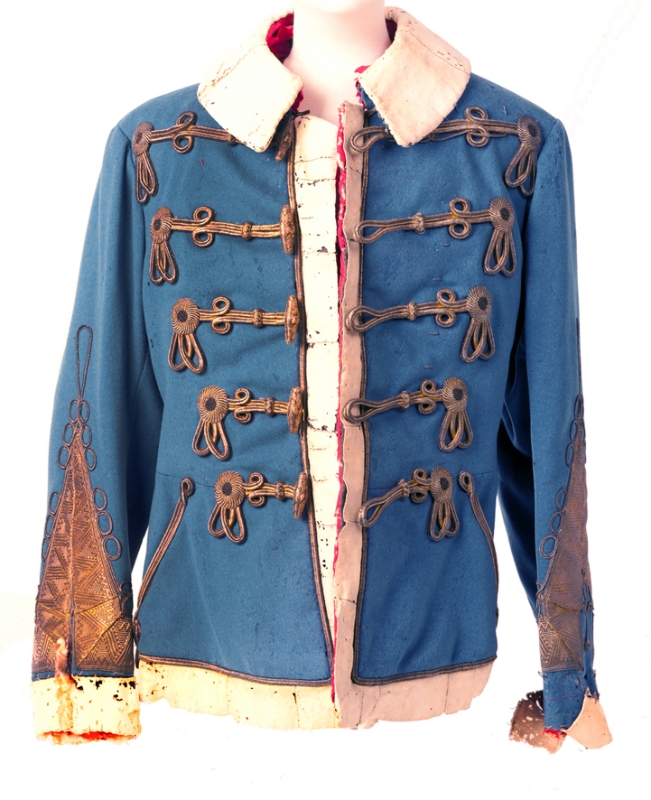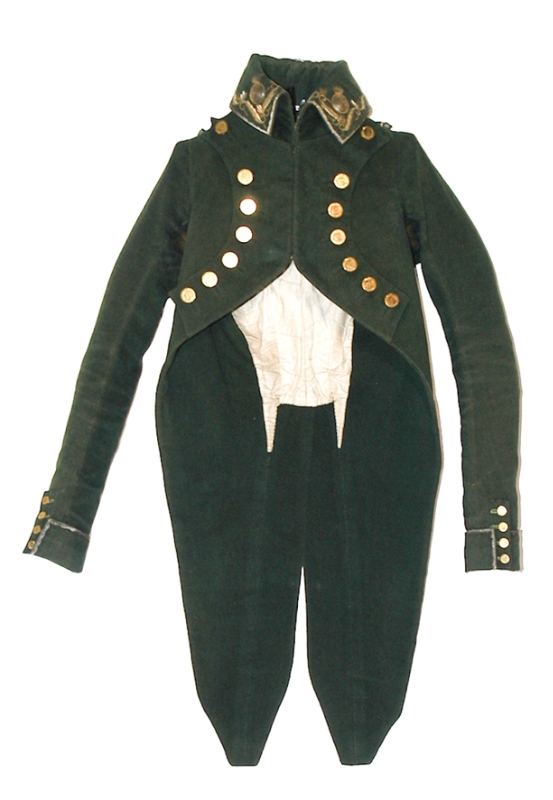UNIFORMS

This collection of the Museum is made up of approximately 2000 items, and includes complete uniforms, single garments, trimmings and accessories. With the Army Museum Uniforms collection we can appreciate the evolution of these garments throughout history. Since fabrics are rather delicate materials, and because these garments were not part of the foundational nucleus of the Museum and due to the fact that uniforms were not regulated till the 18th century, only a small number of military uniforms older than two hundred years is kept. This gap was compensated through a series of reproductions mainly from the early 20th century, sometimes using originals parts such as buttons and buckles.
One of the oldest garments preserved is not really a uniform but it seems to be the clothes worn by Boabdil el Chico when he was taken prisoner in the Battle of Lucena (1483). The set is composed by a robe, babouches, gaiters and a turban. With regard to uniforms, within the oldest pieces (Spanish War of Independence), it is noteworthy the artillery staff officer green coat belonging to Captain Pedro Velarde, or the coat belonging to Captain Luis Daoíz y Torres, restored in 2015.
Besides the chronological and stylistic information, these types of items also speak about their “owners” in different ways: if they were big (coat of Captain General Joaquin Blake, 1815) or small (General Juan Zabala’s dolman, circa 1839), being the smallest in size the children’s uniforms (infantry soldier full dress uniform, rifleman uniform belonging to His Majesty Alfonso XII when he was a little kid); also about where they were posted (the rayadillo field uniforms used in Morocco and Overseas, such as the one belonging to Ramón y Cajal, or the uniform of a Lieutenant assigned to the “Regulares de Larache number 4” regiment, to give just a few examples); or even how they died (some examples are the trousers-shroud that belonged to Pedro Velarde, Lieutenant Evaristo Peralta’s coat, the fragment of Pizarro’s shirt, or the rayadillo filed uniform belonging to Major Rafael Correa, among others).
The collection is completed with “non-Spanish” uniforms used by Spaniards who served in foreign armies (2nd Armored Division, aka Leclerc Division, or the uniform of a German Army officer –Blue Division– during WWII), foreign uniforms (a Philippine field overcoat), or the Honorary Colonel uniform, or General’s uniforms from different foreign regiments belonging to Alfonso XIII (Prussian Army General’s jacket, General’s jacket of the 66th Magdeburg regiment, Austro- Hungarian General’s service uniform blue pelisse –fur-lined coat–, German Army Marshal’s greatcoat, Russian Lancers’ uniform).
To this, various types of civilian clothing can be added, such as Prim’s or Canalejas’ suits, or the beret that belonged to Espoz y Mina.
Images
-
Civilian overcoat that Captain General Juan Prim was wearing when he was attacked on 27 December, 1870
 UNIFORM
UNIFORM -
Detail of the fabric. Marlota (smock-like garment) belonging to Boabdil (Mohammed XII of Granada). 1482
 UNIFORM
UNIFORM -
Fur-lined blue service coat of Austro-Hungarian Cavalry General belonging to King Alfonso XII
 UNIFORM
UNIFORM -
Artillery staff coat and hat plume belonging to Captain Pedro Velarde y Santillán
 UNIFORM
UNIFORM
